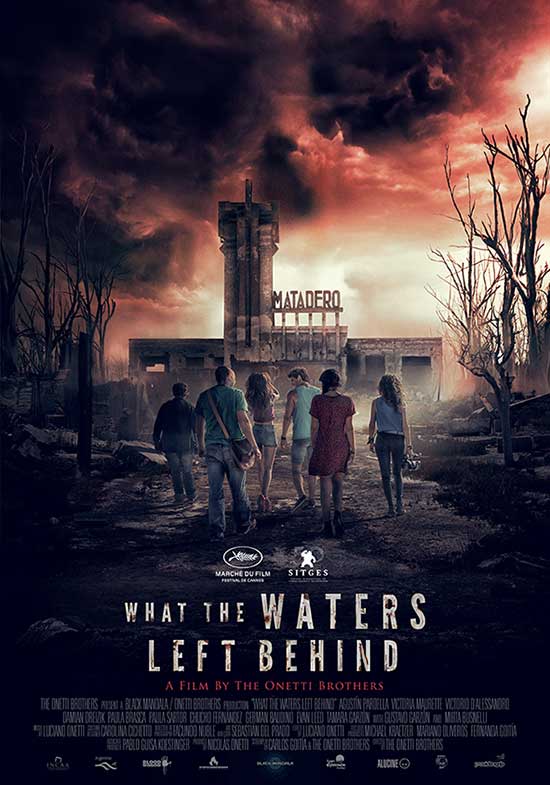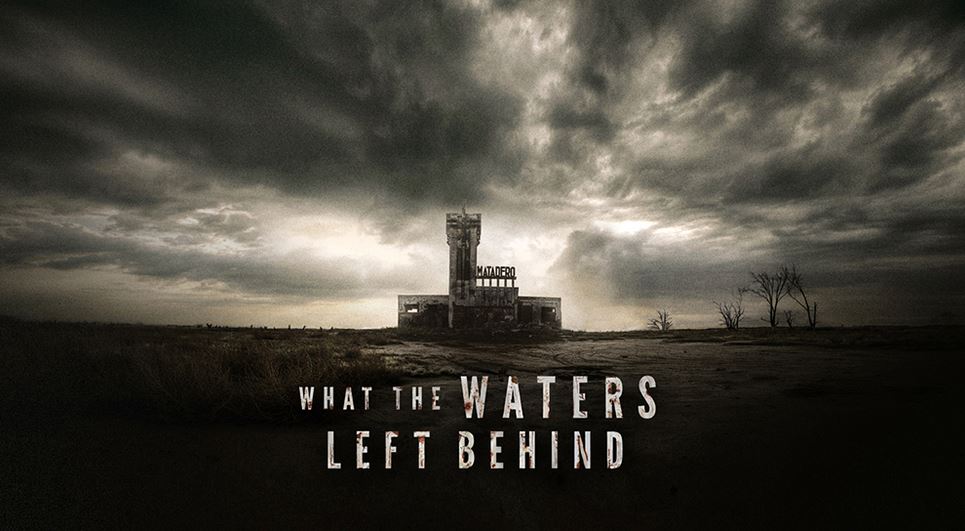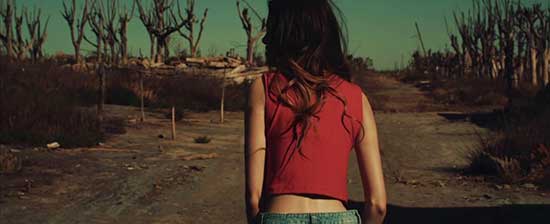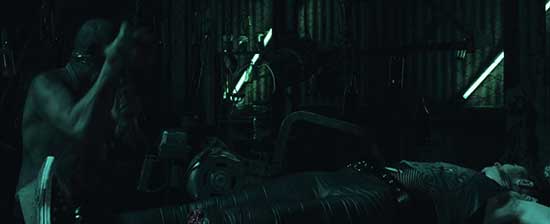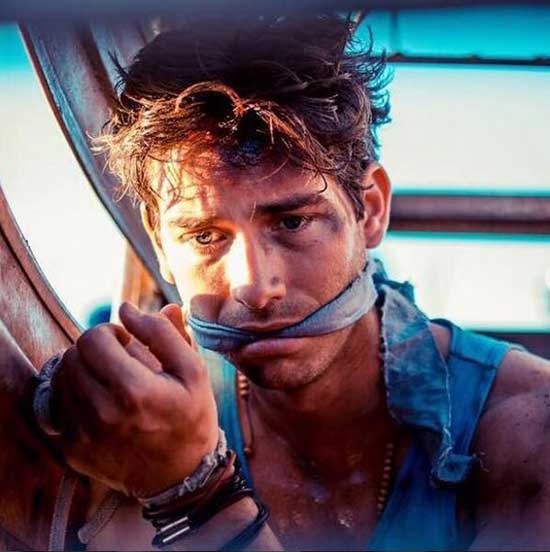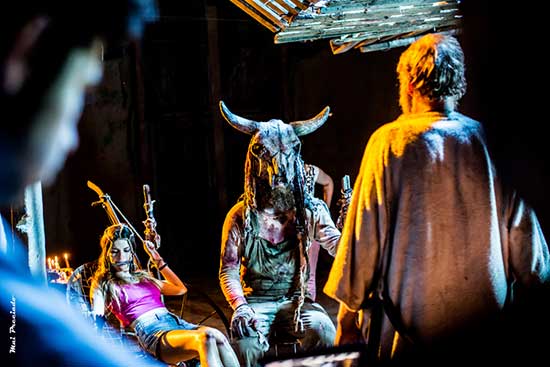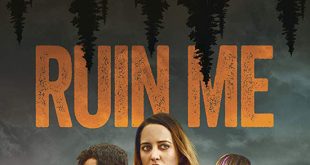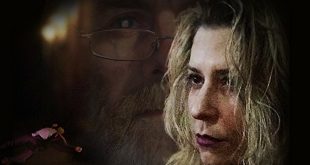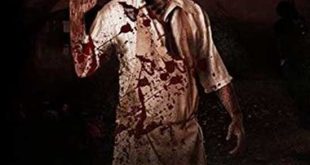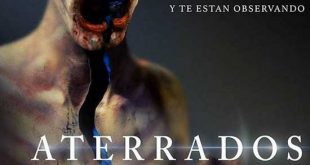SYNOPSIS:
Revolves around a group of young people that take a trip to the ruins in order to film a documentary about Epecuén. Ignoring the warnings, and after a brief tour, they get stranded in the abandoned village. Contrary to what they thought, they begin to realize that they are really not alone…
REVIEW:
NOTE: Villa Epecuen is a real location in the Buenos Aires Province in Argentina. It WAS a tourist village that enjoyed a modest success with travelers due the high-salt-content warm waters of Lago Epecuen that were considered therapeutic. On November 6, 1985, a rare storm situation resulted in structural failures that left the town rapidly covered under 10 meters of water. The village remained submerged until the waters had finally receded after 25 years.
What was left was mostly devastation with a few buildings, such as the slaughterhouse, serving as salt-encrusted landmarks. The town was not rebuilt.
The official word is that there were no direct deaths caused by the flood itself, which makes the entire incident remarkable as well as tragic given the total loss of homes and businesses.
Then the world is handed “What the Waters Left Behind”. Hasn’t the wrecked town of Villa Epecuen had enough horrible things happen to it?
We open with a terrified young woman running in sheer mindless panic from a shuffling figure that wears a cattle skull with large horns as a mask. Before the viewer has a chance to think, “Oh, this schtick again,” the camera blatantly takes the time to zoom in and focus on her chest. Literal titillation, if you’ll pardon the pun. With the mood now ruined by that touch of tackiness, we get to see the single best actor in the film beaten to death before we know her name or even reach the credits. Forget her. The film pretty much does. But you got to ogle her breasts, so – hooray?
On to the scorecard for today’s slaughter watch:
The douchebag Lothario
The materialistic and horny gold digger
The deluded cuckold paying for the gold digger
The proudly predatory lesbian
Some dude who draws a lot
A woman who was a young girl living in Epecuen during the flood
Some odd guy with a high-powered rifle
Place your bets. If I tell you that you should play to clichés, you’re sure to be a winner.
Most of the cast are in a van on the road to Villa Epecuen. The sun is hot, and the rotted carcasses of animals line the road. This feels familiar.
They stop at a rundown gas station populated by odd characters who try to sell our cast meat pies of a questionable nature. Our crew of mostly entitled snots are rude and nosy, but get bent out of shape when they are called on both moral failings. As if the locals have time for such nonsense.
Our ship of fools – sorry, van of victims – pulls into the ruins of Epecuen. As they plot the abandonment of their only means of getting back home, no one seems to notice the man standing in plain sight on the 3rd or 4th floor of a damaged building as he scopes each person with his high-powered rifle. If the repeated shots of a missing person flyer with the face of the girl we saw killed at the beginning of the film doesn’t clue you in to this person’s identity, I highly recommend “The Sound of Music” as a good way to spend your afternoon with less confusion. (Hint: The Nazis are the bad guys.)
As mentioned, the entire crew abandons their vehicle to – wait for it! – allow someone to cut their fuel line, which, when discovered, causes this mass of neurotic folks to turn on each other which results in everyone scattering again in the face of someone actively attempting to strand them in an empty town. (Not entirely true as refuted in well-documented articles, but why let facts get in the way of a poor “Texas Chainsaw Massacre” retread?) This leads to some rather lovely shots of sunsets that really seem out of place in a film that intends to wallow in depravity, though the film does give us a clear image of a poor sod getting his cranium smashed open so that helps with the flagging pace.
It seems there are some residents of the town that were not mentioned in the travel brochures. The fact they hang out in the remains of the slaughterhouse that seem to tower over the rubble should give you a hint as to what was in those meat pies from earlier. Yup, you get the cast slowly (My GOD, how slowly!) hacked, stabbed, raped, poked, and pickled with only a vague hint as to how the “family” came to be the way they are. I would rather watch THAT story. At least it might have something new by way of cultural exposure, but, nah, let’s just shoehorn a shop-worn American-centric horror tale into a uniquely foreign location.
Then the film offers up a “twist” that even M. Night Shyamalan would do a facepalm upon watching because it simply does not make much sense no matter how you want to look at it, unless the “family” intends to lose a couple of members every time they hunt tourists, and that means — yeah, doesn’t make sense.
Aside from the generous lifts from “Texas Chainsaw Massacre” and “Motel Hell” (and every cannibal-family movie ever made) that should leave even an occasional horror fan bored with the lack of creativity, “What the Waters Left Behind” does two things that sink the endeavor faster than clichés:
First, the Onetti brothers (writers/directors) really do their film and Epecuen no favors. They take an utterly unique location and fail to use it to any advantage. You want a wrecked village? I’m sure there are plenty of locations that could work in that capacity. (I can think of three within 100 miles of where I’m sitting, and I’m sure Argentina has a few.) Instead, they use a real town that experienced a freak natural disaster. So, either they are suggesting that the town harbored and even employed a family of cannibals, which is insulting to the memory of the town, or that the town in its current state should be avoided because of life-threatening events, which couldn’t be further from the truth and only damages the slowly-returning tourist trade in that area. They could have just used the location but not given the name as the story does not hinge on being in that particular town. A nameless town would actually be more unnerving.
Second, the film takes place in Argentina, but other than having the name of the town shoved down my throat, this could have taken place anywhere. Does Argentina not have its own cultural myths and/or taboos that could make for good horror subjects? I mean, I got a better sense of Argentine culture and sensibilities while watching 1967’s “Blood of the Virgins”, and that was basically a cheesy vampire flick. Instead of exploiting a wrecked village, mine the country’s unique culture to give the world something that could only come from Argentina. That will drive fans to your work more than generic torture p*rn images.
At least the film was visually competent even if it looked like it was shot through at least three different filters to get that high contrast but sun-roasted quality that seems to go along with a lot of torture porn flicks.
The only reason to watch this movie is the graphic violence. That being the case, just go watch “Punisher: War Zone” instead. It’s more fun as well.
 Horror News | HNN Official Site | Horror Movies,Trailers, Reviews
Horror News | HNN Official Site | Horror Movies,Trailers, Reviews
